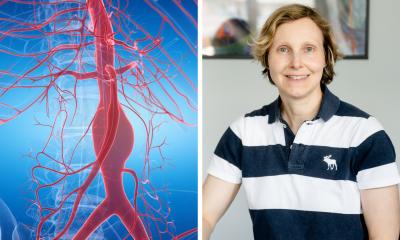Fitness
Exploring the aorta’s “weak spots” for aneurysms

Alexander Brückner (front), Dr Sarah Rieck (back left) and Adrian Brandtner (back right) worked on the study at the University of Bonn.
Image source: RUB; photo: private
“We identified certain patterns of upregulated genes in the sites where dilatations frequently form,” explains Alexander Brückner, a PhD student in the working group at the Institute of Physiology I at the University Hospital Bonn and the University of Bonn and first author of the study. “These remarkably active genes affect, for example, changes in the extracellular matrix, the formation of new blood vessels and some inflammatory reactions.” Such genetic abnormalities are also found in tissue from human aneurysms. Together with cooperation partners from the Institute of Physiology at the University of Lübeck, the researchers also determined the stiffness of the endothelium in the healthy aortic samples. The less elastic the endothelium, the more detrimental it is to vascular health. They proved that the endothelium was stiffer in the sites where aneurysms frequently develop than in the control areas.
In the next step, the team used an established model of a knock-out mouse that tends to form aneurysms due to a targeted genetic modification. If high blood pressure is additionally induced in these mice, aortic aneurysms form. They compared the genetic activity in the aortic endothelium of the genetically modified mice without aneurysm with that of mice that had developed an aneurysm due to added high blood pressure. “In the mice with aneurysms, we found a much greater degree of gene alterations that belong to the same category as the gene alterations in healthy mice,” says Brückner. “In the mice with an aneurysm, the vessel wall was also altered.”










